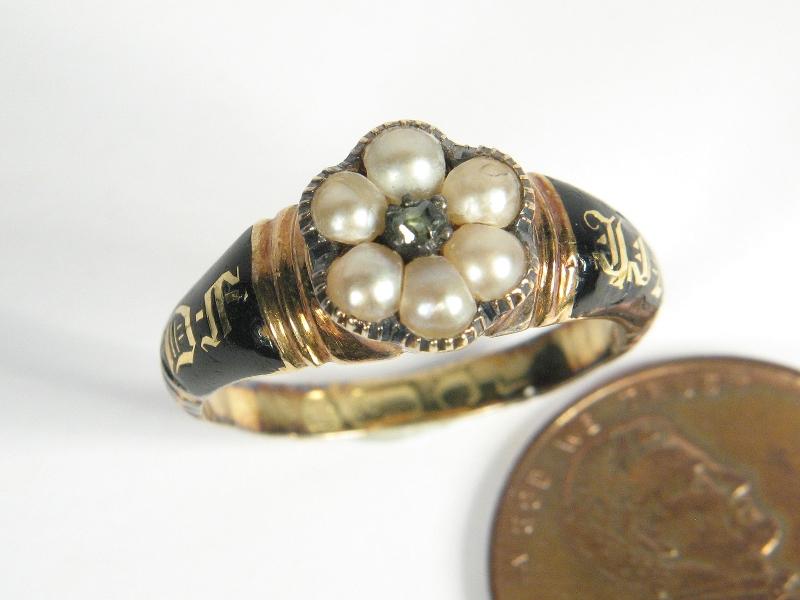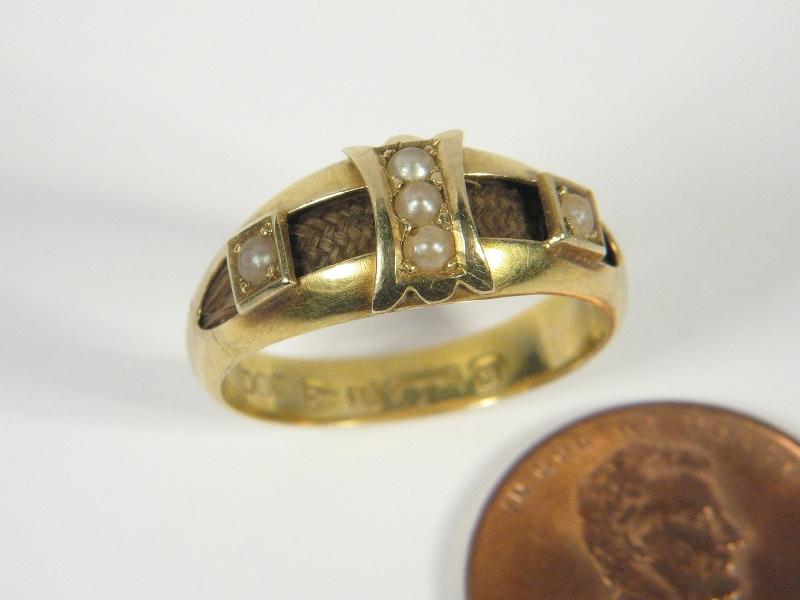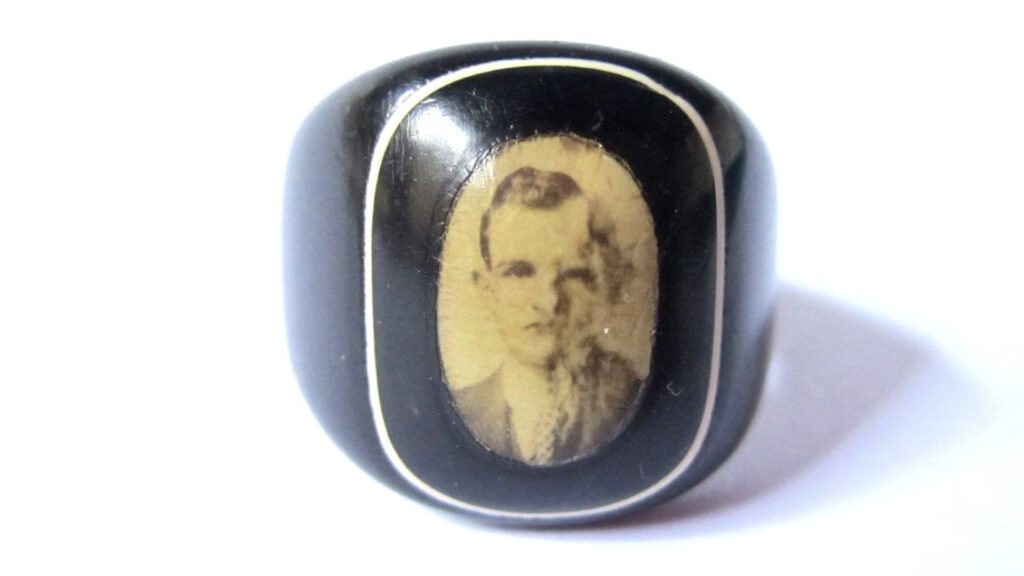*Revisiting* Gothic Revival in Culture and Jewellery: Part 3, Breaking Perceptions
After the previous looks at the Gothic Revival period and its affect on subsequent mourning jewellery, one of the things to consider is that while perception may lead to the Gothic Revival creating a period of jewellery design that was rather static, one must note that it only took the elements of the period, which were not unique to the period, but embellished, and used these concepts as a central motif.
Heavy black enamel was one of the most consistent styles that carried through. Black enamel had been considered a mourning motif for the previous 200 years, but when looking at Victorian style, note that the previous Neoclassical period was one of the strongest, unified mainstream styles ever to impact style on a fully Westernised scale. America, France and England adapted it in their own ways and it took over from a period where Rococo, Baroque and the memento mori symbolism had left off. Black enamel bands were popular since the 1500s and remained so throughout the 18th century, yet the adaptation through the Gothic Revival period and beyond produced rings like this to use the enamel as the bold mourning statement.
The following ring comes from c.1850 and below, 1864, note the leap of the bold enamel to become prominent and also the change in font styling.
Then let’s look at this piece from 1881, note again the enamel in play. This ring has adapted the Rococo Revival style and infused that within the black enamel on the shoulders. In terms of style, much of this can find its origins in the early 19th century, from the pearl-surrounded hair memento to the enamel itself..
When it comes to styling, this particular brooch shows the Gothic lettering in full bloom. Yet the acanthus surround shows the 1860s influences, making the lettering a solid 30 years outside the idealised moment of the Gothic Revival. 30 years is a long time for any art style to be all-pervasive, but in mourning jewellery, the style makes the statement that could be understood 30 years before or after this piece was constructed. Its bold enamel, the hair memento leave no dispute as to what it is.
And then there are pieces like this from the late 19th century. Dating from 1885, this piece shows how the mourning style had become popular within the sentimental and non-death related styles of the same time. The culture had adapted well to the mainstream fashion of death and exploited it in other fashion designs.
When it comes to sentimental jewellery of the latter 19th century, styles had become bigger, alloys were typically in use and much of this was to accommodate fashion and the rise of photography in jewellery. Photography was a cheap means of obtaining a sentimental keepsake of a loved one and the technology was becoming more compact, enough to work perfectly in lockets. The latter 19th century, particularly post 1880, started to use silver as a popular material, yet base metals copied the look and feel of gold well enough, for mourning jewellery, Pinchbeck was quite common. In this, you can see the bold, enamel styles carry through with the statement of the Gothic Revival showing through. ‘In Memory Of’ and the standard statements were rendered in bold black enamel, often using the Gothic fonts and despite the inclusion of many mourning symbols, the adherence to the Christian paradigm in these jewels reflected the change bought about in the 1830s through the Gothic Revival.
So, there we have it. Three weeks of Gothic Revival exploration in culture and jewellery! I hope you enjoyed reading this as much as I did writing it, as you never know what tomorrow will bring.












